5 Types of Cockroaches in Colorado (With Pictures)
-

- Last updated:
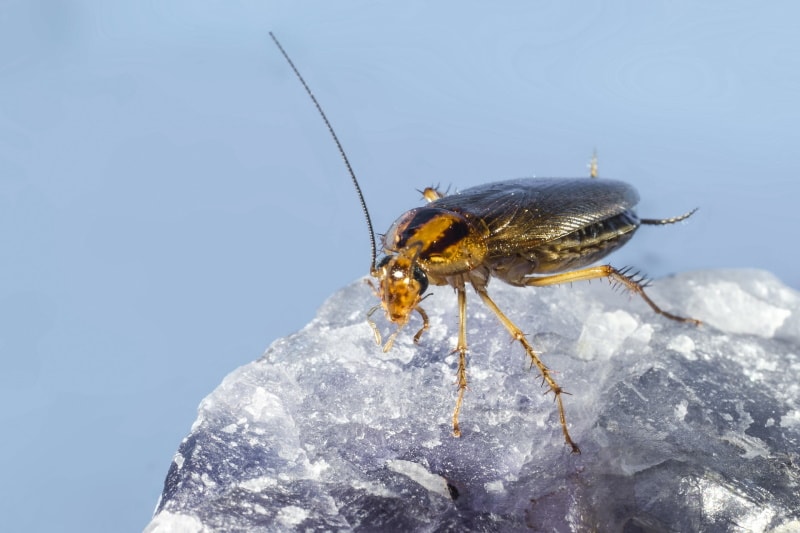
Cockroaches are common pests in Colorado, mainly due to the friendly climatic condition of the state. The climate is never too hot or too cold, making it convenient for the cockroaches to survive and reproduce.
Your home doesn’t necessarily need to be dirty for cockroaches to invade. Apart from a friendly environment, they are also attracted to food and water, which are accessible in every home in Colorado.
In this article, we look at five types of cockroaches prevalent in Colorado and how to eliminate them. Read on for deeper insight.
The 5 Most Common Cockroaches Found in Colorado
Colorado is home to several species of cockroaches. However, some are more common, and we often come across them. Such cockroaches include the wood cockroach, German cockroach, oriental cockroach, brown-banded, and Oriental cockroaches.
A detailed explanation of the listed cockroaches is illustrated below.
1. American Cockroaches
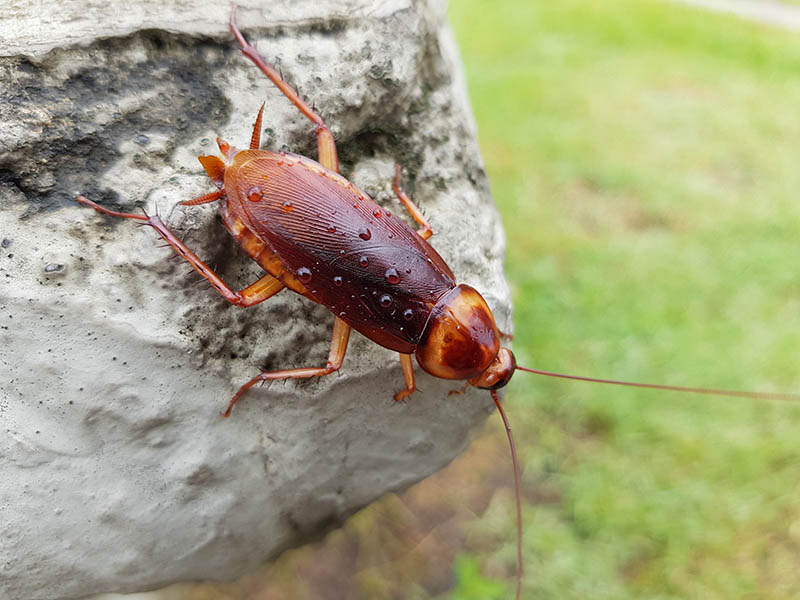
American cockroaches are often found outdoors, with few occasions when they find their way inside houses. You may find many of them hiding in a sewer, flowerbeds, underneath mulch piles, yards, and alleys. A warm, moist, dark environment is the perfect habitat for them. If you spot them in your home, it is often due to a food shortage or a climate change that has made their habitat outside no longer conducive.
While outside, the American cockroaches may feed on decaying leaves, fungi, algae, or other smaller insects. These are the most dangerous cockroach species in Colorado, posing a severe health risk. They have been reported to spread at least 33 different bacteria and pathogens, such as E. coli and Salmonella.
The cockroach picks up germs and bacteria on its body and legs as it crawls through sewage and decaying material outside. When they access your home, the bacteria are transferred to your utensils and cooking surfaces. Their saliva, fecal droppings, and urine contain allergen proteins that trigger allergic reactions and asthma attacks, especially in children. Their bites are not known to be harmful but should be checked immediately if infected. However, it is rare for American cockroaches to bite despite being able to do so.
- Use a silicone-based caulk to seal openings like gaps and cracks on the walls, and drains.
- Avoid letting dishes pile up in your sinks for too long.
- Always vacuum your home at least twice weekly to remove food particles that may be under kitchen appliances and behind cabinets.
- A professional pest control service provider may also come in handy when all your other tactics are not working.
2. Wood Cockroaches
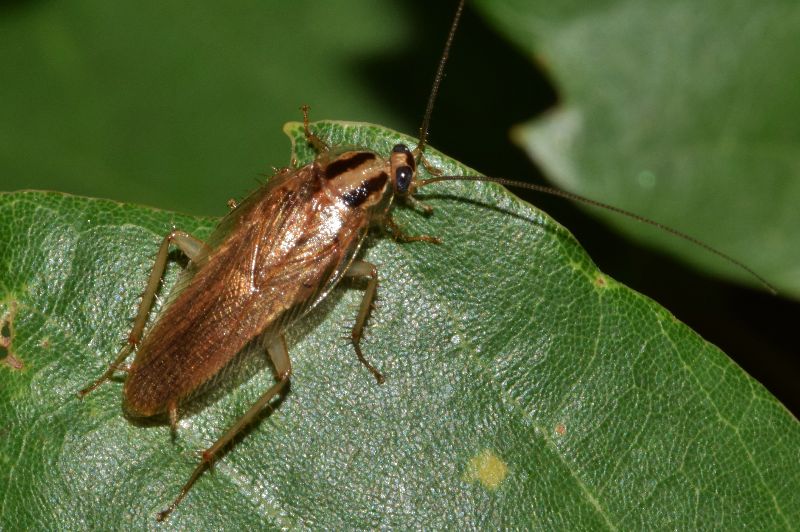
Wood cockroaches are very common in Colorado, often hiding in dark damp places such as under wood piles or in decaying logs, and sometimes in your basements and garages. They may not dwell so much in your home because they need a moist environment as their natural habitat. They will also not damage your house structure or furnishings.
- They have about ½-inch to ¾-inch-long antennae
- They are either black or brown in color
- Their nymphs may look like adults but do not have wings, while adult ones have wings.
- Although adults have wings, they can only fly for a very short distance when they feel threatened.
They reproduce by laying ootheca – these are egg cases containing about 30 eggs. A single wood cockroach can lay up to eight ootheca in its lifetime, whose lifespan is about 2 years.
It is not easy for the wood cockroaches to wander into your house. If they do, it is usually for a short time before they find a comfortable, moist habitat. They are also not shy pests and are active both day and night and hardly scamper when approached.
- Since Wood cockroaches are often outdoor pests, make sure that windows and doors fit tightly and that no gaps or cracks will allow the cockroaches to crawl back into the house.
- Breeding spaces like a pile of wood should also be moved away from your home.
- You may also use insecticide barrier treatments around the windows and doors or any possible entry for the pests.
- Finally, consider calling a pest control professional if the infestation is too much.
3. German Cockroaches
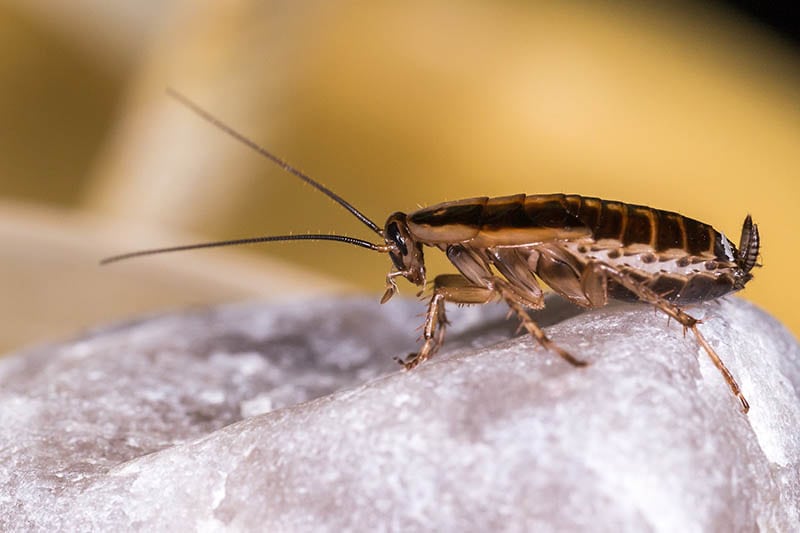
This is another species that is common in Colorado. Their most comfortable habitat is warm, humid, and close to a moisture source and food environment. You are likely to spot them in the kitchen and bathroom. You will notice their droppings on countertops or in drawers, darker spots on the top of doors, around tiny cracks into the wall, and corners of the house.
The cockroaches can eat anything from spills on the kitchen floor to fecal matter from the toilet. They still pass their droppings and vomit on kitchen cooking surfaces and food, passing very aggressive bacteria to human beings.
- They are most active at night when there is minimal movement around the house. That is when they will crawl out of their hiding spaces to look for food, any food that is sweet to them is good enough to be eaten.
- They are attracted to light.
- They reproduce by laying up to 50 eggs attached to a sticky substance produced by the cockroach to hold the eggs together.
- They are known to breed up to six generations in just 1 year.
German cockroaches are among those believed to cause serious health issues. They are considered dangerous to people with asthma since they may trigger an allergic reaction.
The quick reproduction nature of German cockroaches may make controlling tactics difficult. However, for a start:
- Consider practicing good sanitation by cleaning up crumbs, wiping spills, and vacuuming as often as possible. Also, avoid leaving a pile of dirty dishes in the sick, especially at night.
- Ensure to seal up cracks and crevices that cockroaches may use as their hiding place.
- Since they are also attracted to light, ensure the lights are off before bed.
- Finally, always ensure your leftover meals have been kept in sealed containers.
4. Brown-banded Cockroaches
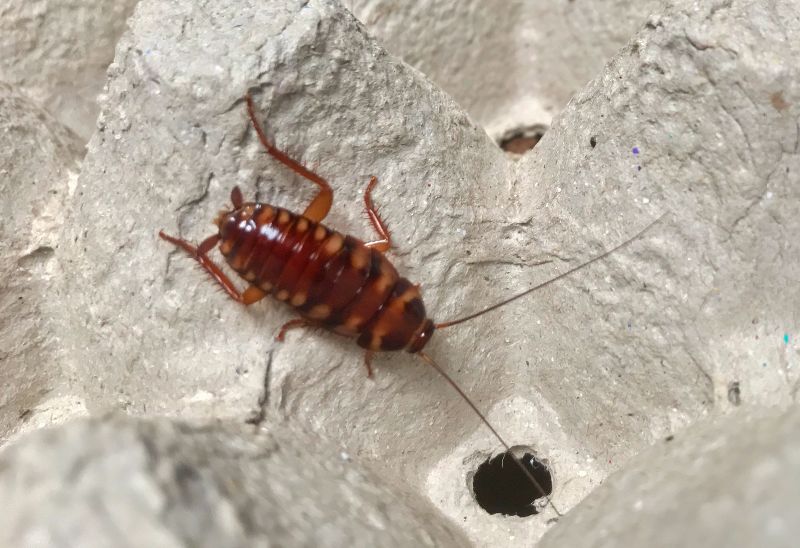
These are brown in color with two dark bands across their backs. These cockroaches love a warm and dry environment. You may find them hiding in furniture, behind picture frames, inside pantries, closets, clocks, radios, light switch plates, door frames, or upper walls of cabinets. They rarely find floors comfortable, as they like staying away from water sources.
The brown-banded cockroaches may cause damage due to their eating habits. They often feed on items like wallpapers, bindings on old books, envelopes, and nylon stockings. However, at times, they also feed on other cockroach species.
These cockroaches hatch at least 30 eggs in each cluster. Per year, they may produce up to 50 clusters. The eggs hatch every 2 weeks after being laid and have a lifespan of about 1 year. The nymphs only take about 2 months before they finally grow into adulthood.
These cockroaches spread bacteria leading to illnesses like gastroenteritis and diarrhea.
- Just like most cockroach species, ensure to keep a clean environment.
- When the do-it-yourself tactics are not working, make sure to call a professional pest control service to fully eliminate the Brown-banded cockroaches from your home or workplace.
- You may also consider effective insecticides and baits, sealing cracks and crevices in walls and floors, and making sure there are no food particles and spillage on the floor and sinks.
5. Oriental Cockroaches
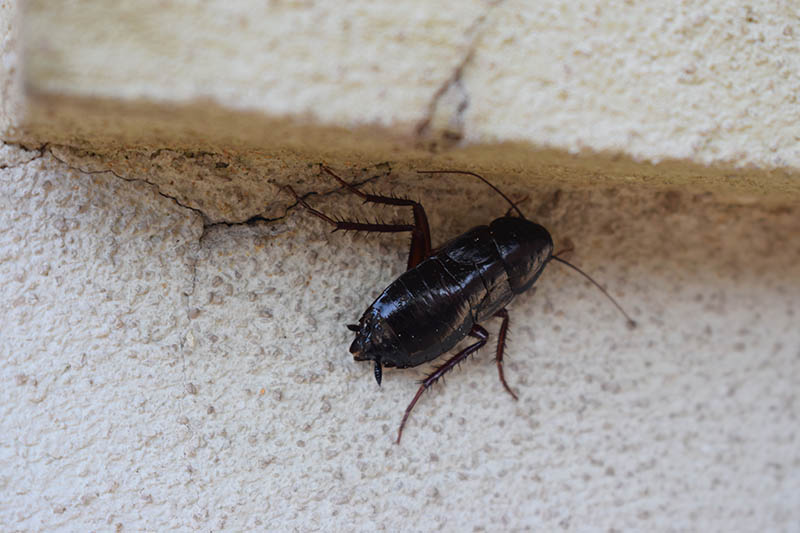
Oriental cockroaches, also known as water bugs, prefer a dark, damp environment. You may find them hiding in wet basements, under sink porches, sewers, drains, crawl, floor drains, or washing machines. Outside, you will find them in abandoned cisterns, yards, shrubs, flowers, garbage crawl spaces, and piles of stone. You will hardly notice them on walls or high cupboards.
When you see Oriental cockroaches in your house, it is probably because they have run out of food from outside, or the climate is too dry, and they are looking for a more humid environment. They will invade your home through ventilators, air ducts, or space under the door.
Oriental cockroaches feed on food crumbs and decaying organic matter from outside. They are also heavily dependent on water. When there is water, the cockroaches can survive without food for even a month. However, without water, they will barely survive for 2 weeks.
- The living and feeding habits of Oriental cockroaches make them one of the most dangerous pests in Colorado. As they crawl through tiny spaces of garbage disposals, sewers, kitchen sinks, and bathrooms, they carry with them some of the most dangerous bacteria, protozoa, and viruses into your cooking surfaces and utensils. Such bacteria cause health conditions like food poisoning, dysentery, diarrhea, etc.
- Oriental cockroaches also produce odorous secretions from several parts of their bodies. Suppose they are infested in a single section of your home in a large number—you may begin to perceive a characteristic odor.
- The cockroaches’ excrement and cast skins are also responsible for carrying around allergens responsible for allergic reactions like rashes, asthma, watery eyes, congestion of nasal passages, and sneezing.
- Consider placing sticky traps in specific locations – for instance, walls or in the corner of the floor.
- Get rid of moisture and food sources that could be their main attraction.
- You can also seal any possible entrance of the cockroaches from the cracks and crevices to windows and doors.
Indicators of Cockroach Infestation in Your Home
Since certain species of cockroaches are not so aggressive to show themselves during the day, it may be hard to know just how much infestation has taken place in your home. However, there are specific indicators you may come across that will tell you your home is under attack by cockroaches. You will often find these clues in attics, basements, and crawl spaces. They include:
- Rust-colored cockroach droppings on the walls, corners, and floor
- Small, lightweight egg casings
- Sticky stains on tables, cabinets, walls, and kitchen surfaces
- Musty smell that only seems to linger after you are done washing the house
- Sheds of cockroach exoskeletons
- You must see cockroaches crawling during the day or night when you go for a glass of water in the kitchen.
Cockroaches will invade your home through the basement windows and garages, underneath your door, or through any doors or windows that don’t have weather stripping. Their destination is often the kitchen, the laundry room, the basement, under kitchen appliances, or behind kitchen cabinets. The cockroaches will also find their way into the drains to search for food particles.
If you have encountered any of the above clues in your home or working environment, consider improving your cleaning methods or contacting pest control professionals.
Find a pest-control specialist in your area, and get free, no-commitment estimates for your project.Consult a PEST-CONTROL expert

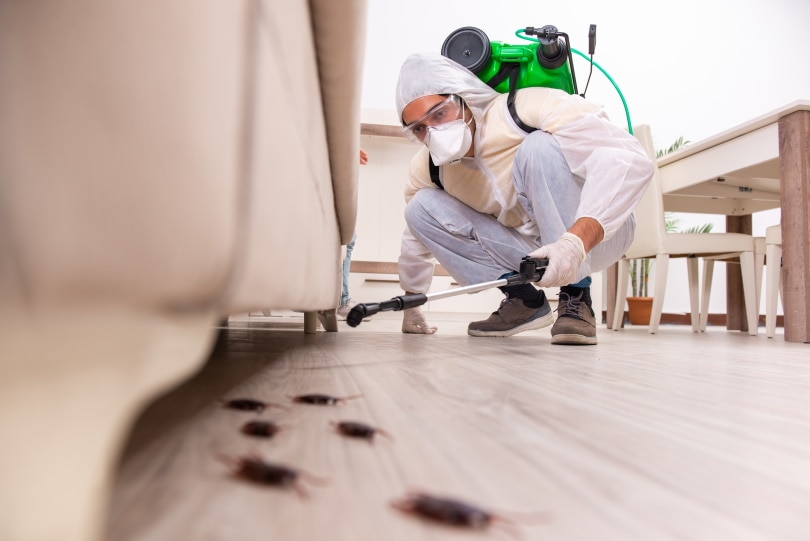
How to Identify a Cockroach
Colorado is home to several types of bugs, and certain pests can be mistaken for other kinds of bugs. Below are specific shared features of a cockroach in case you come across it in your house.
- Cockroaches are medium-sized bugs whose exoskeleton may seem shiny. They have six legs and two extensive antennae on their heads.
- Almost all types of cockroaches have an oval-shaped body that is flat and ranges from ¾ inch to 3 inches in length, depending on the species.
- The color of cockroaches differs depending on the kind of species they belong to. However, standard colors include brown, tan, black, or amber.
- Cockroaches must leave behind noticeable evidence of their existence in a place. For instance, droppings, egg casings, stains, or a musty smell.
- All cockroaches tend to move surprisingly swiftly, especially when confronted.
Conclusion
Mentioned above are five common cockroaches in Colorado. Despite having dozens more, the ones mentioned above are the most common in homes and working stations. Without proper precaution, they will not only cause a nuisance and embarrassment to you, but you will also be at risk of contracting harmful diseases.
The first step to eliminating cockroaches is improving your hygiene by not letting dirty dishes pile up in the sink all night and vacuuming your home at least twice weekly. You should also use pest control chemicals, seal all possible openings that may let the cockroaches in, or seek professional help.
- See Also: 10 Types of Cockroaches in Alabama
- https://hortnews.extension.iastate.edu/wood-cockroach
- https://www.pestworld.org/pest-guide/cockroaches/german-cockroaches/
- https://www.betterhealth.vic.gov.au/health/healthyliving/cockroaches#cockroaches-may-spread-a-range-of-diseases
- https://extension.psu.edu/brown-banded-cockroaches
- https://extension.psu.edu/oriental-cockroaches
- https://www.ortho.com/en-us/library/bugs/how-identify-cockroaches
Featured Image Credit: Erik Karits, Shutterstock
Contents


